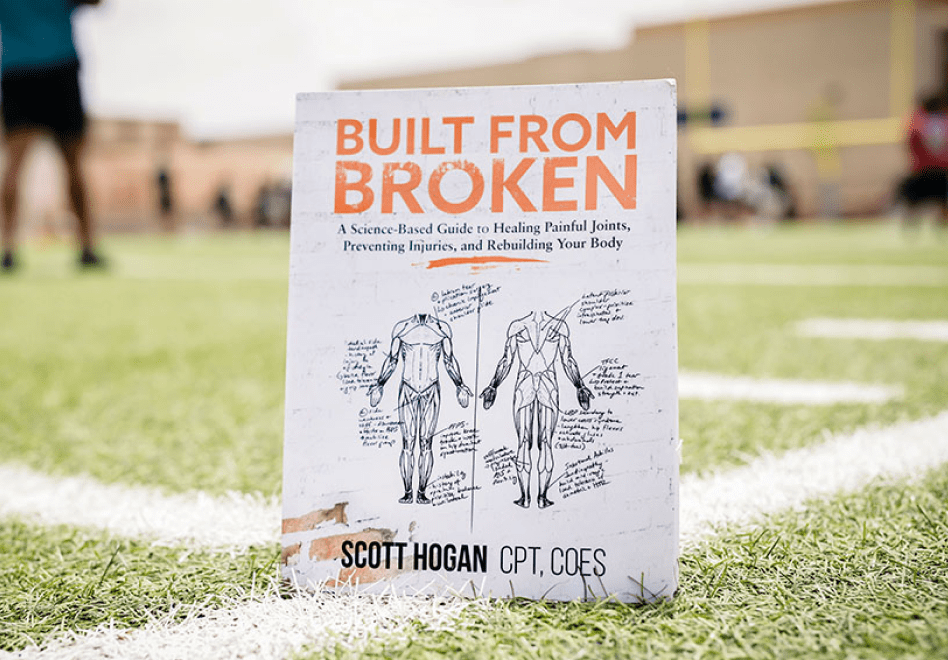
Be built (to last).
The right supplements can help you recover naturally and build a resilient body.

Supplement Quiz
Take this short quiz to discover the perfect supplements for your needs and goals.
About SaltWrap

Built from Broken
Get the best-selling book from SaltWrap founder, Scott Hogan, and start rebuilding today.
Does Fasting Work for Fat Loss?
By Joe Zagami
When it comes to burning fat, one buzzword has dominated everything from online searches and magazine articles to social media posts and how-to videos in the last decade: Fasting.
Specifically intermittent fasting.
This is the practice of alternating between days of fasting and eating.
Many people swear by it. They say it helped change their lives. Others swear it off. They say it doesn’t work. Or that it’s just too hard. But as usual, the question we’re most concerned with here at SaltWrap is: what does science say?
Let's find out.

Fasting or Caloric Restriction: Which Is Better for Fat Loss?
Researchers at the University of Colorado recently completed one of the most extensive reviews to date on the effects of fasting for weight loss.
They found that 9 out of 11 studies they reviewed showed no significant difference in weight or body fat loss between people who fasted and those who used traditional caloric restriction.1
What does this mean?
In short, it suggests that fasting can work just as well as limiting caloric intake the old-fashioned way. (And let’s face it, if there’s one thing people don’t want any part of this time of year, it’s calorie restriction.)
So, intermittent fasting is a slam-dunk for fat loss... Right?
Not exactly.
Going for a day or more at a time with minimal caloric intake is hard enough. But attempting this for the first time (or at all, honestly) while the aromas of honey-baked ham and oven-fresh cookies lurk around every corner?
It seems borderline crazy. At the very least, you'd be putting your willpower under tremendous extra pressure.
This is where time-restricted eating (TRE) comes in.
What Is Time-Restricted Eating (TRE)?
Time-restricted eating is a specific type of intermittent fasting. One that doesn’t involve active calorie restriction, or even calorie counting. Heck, it doesn’t even involve that much fasting.
How does it work?
In short, you limit your meals (i.e., calorie intake) to a specific “feeding window.” This is typically anywhere from 6-8 hours.
Let’s say you start with an 8-hour feeding window. And you have your first meal at noon. You’d have from 12 PM to 8 PM to eat a day’s worth of calories. (Not sure about you, but that’s our kind of challenge.)
The idea is that by restricting your eating window to eight hours, you limit the amount of caloric damage (note: not a scientific term) you can do throughout the day. That explains why some TRE advocates say that you can eat whatever you want and still "keep the wheels on."
We won’t go that far. But you can see what makes this approach extra appealing during the holiday season. And we admit, it does seem to give you the best of both worlds during a very calorie-dense time of year.
If the idea of not eating for 16 hours at a time makes your palms sweaty, we get it. But if that's the case, think of it like this: you’re just skipping breakfast.
Say your feeding window starts at noon and goes until 8 PM. Chances are you’ll be sleeping for much of your “fast.” Plus, you’re free to drink water, black coffee, and tea in the morning.
Just be sure to avoid things like creamer and sweeteners that add calories. (Keep in mind that “zero sugar” does not mean “zero calories,” and calories break your fast.)
Putting It All Together
Is TRE a silver bullet for weight loss? Probably not. (Though there certainly could be metabolic and other health benefits to giving your digestive system a 16-hour break.)
Is it a fair compromise that could help you enjoy the holidays yet stay mostly on track?
It could be.
Our take? Give TRE a try. See how it makes you feel.
It might be tough at first. If that's the case, try a 12-hour fast (ex: 8 PM to 8 AM) instead. Don’t sweat it. You
can always work your way up to the full 16 hours. (And beyond.)
What you eat during your feeding window is up to you, of course... But what if you're not sure where to start?
The Keto Diet has been all the rage for a while now. (Just walk down the snack aisle at your grocer and you'll see what we mean.) As we recently wrote, a ketogenic diet may play a helpful role in injury recovery. But that doesn't mean it's easy to follow or stick with.
For most people, we recommend following a simple (but effective) anti-inflammatory diet. The proven health benefits are too numerous to list and there's a good amount of room for customization. Check it out for yourself if you haven't already.
Have you tried intermittent fasting or time-restricted eating? What was your experience like?
Leave a comment below and let us know.
Founder: Scott Hogan

I created SaltWrap to bring together the most practical ideas in therapeutic sports nutrition, corrective exercise, and functional fitness — with the goal of keeping you (and myself) strong, mobile, and built to last.
I've worked as an A.C.E. Certified Personal Trainer, Orthopedic Exercise Specialist, and nutritional supplement formulator.
But more importantly — I've spent most of my life battling injuries, joint pain, and just being plain beat up. So I know what it's like to struggle toward fitness goals.
SaltWrap is here to push you through injuries, setbacks and perceived physical limitations. To a place beyond what you think you're capable of. Sign up here to stay in the loop.
Learn more about my best-selling injury prevention and recovery book, Built from Broken.






